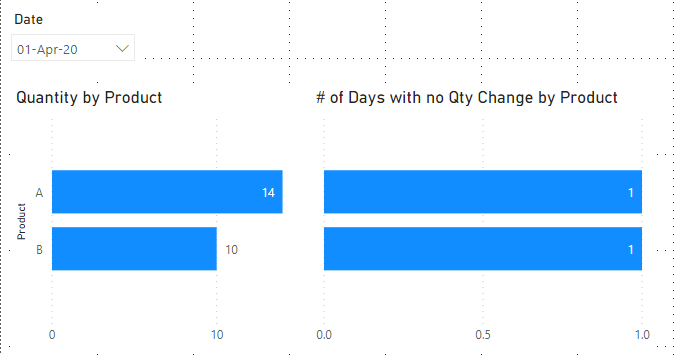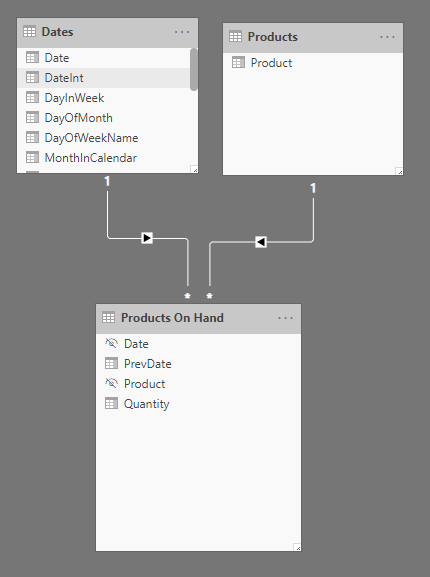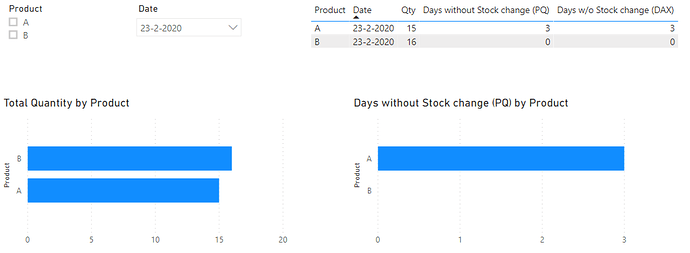.
Well no, because we don’t have to figure anything out - the technique is provided by @BrianJ in post #2
Applying that logic will get you the very same result but it also increases the model size, remember this requires four additional Calculated Columns that will be stored in the fact table of your Model!
RowNo =
VAR vTable = SUMMARIZE( 'Products Movements', Dates[Date], Products[Product], 'Products Movements'[Quantity] )
RETURN
RANKX( vTable, [Date], , ASC, Dense )
.
PrevRowValue =
VAR CurrentDate = 'Products Movements'[Date]
VAR CurrentProduct = 'Products Movements'[Product]
VAR CurrentQuantity = 'Products Movements'[Quantity]
VAR vTable = SUMMARIZE( 'Products Movements', Dates[Date], Products[Product], 'Products Movements'[Quantity], [RowNo] )
VAR PrevRowTable =
TOPN( 1, FILTER( vTable, [Date]< CurrentDate && [Product] = CurrentProduct ), [Date], DESC, [Product] )
RETURN
MINX( PrevRowTable, [Quantity] )
.
IsChange =
VAR vTable = SUMMARIZE( 'Products Movements', Dates[Date], Products[Product], 'Products Movements'[Quantity], [RowNo])
RETURN
SWITCH( TRUE(),
'Products Movements'[RowNo] = MINX( vTable, [RowNo] ), SWITCH( TRUE(), 'Products Movements'[Quantity] =0, 0 ),
'Products Movements'[PrevRowValue] = 0, SWITCH( TRUE(), 'Products Movements'[Quantity] >0, 1, 0 ),
'Products Movements'[Quantity] = 'Products Movements'[PrevRowValue], 1,
0
)
.
DaysUnchanged =
VAR CurrentProduct = 'Products Movements'[Product]
VAR CurrentQuantity = 'Products Movements'[Quantity]
VAR CurrentRow = 'Products Movements'[RowNo]
VAR vTable = SUMMARIZE( 'Products Movements', Dates[Date], Products[Product], 'Products Movements'[Quantity], [RowNo], [PrevRowValue], [IsChange] )
VAR LastLossRowNum =
MAXX(
FILTER( vTable,
[Product] = CurrentProduct &&
[Quantity] = CurrentQuantity &&
[IsChange] = 0 &&
[RowNo] <= CurrentRow ),
[RowNo]
)
VAR Streak =
'Products Movements'[RowNo] - LastLossRowNum
RETURN
Streak
.
My advise stick with the Power Query solution but hey it’s up to you…
eDNA - Quantity change (PQ & DAX solution).pbix (117.4 KB)



